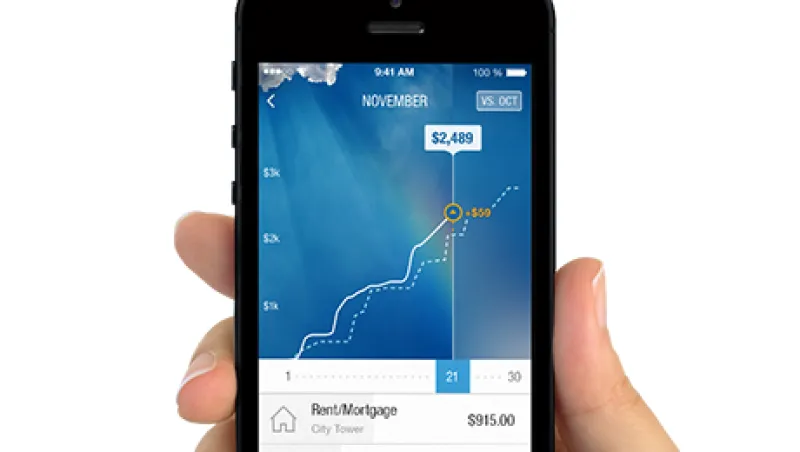The next time you head to the mall in San Francisco (if you’re a person who still goes to brick and mortar stores, that is), look carefully at the people you see. Try to spot dark rubber bracelets about the width and thickness of a human pinky. Those devices help the self-curious monitor their sleep and their heartbeats and their diets and their breathing and their steps per day — the list grows seemingly by the week. Know thyself, insists one of the great credos of Western culture.
In the most literal sense, those shoppers know more about themselves from second to second than any other human beings in history. That bracelet is called a Jawbone UP; it and other products, from Fitbit and Lark, belong to a lifestyle movement called Quantified Self (QS). Jawbone and its competitors use accelerometers, actigraphs, GPS trackers and other sensors to record a wealth of data not only about their users’ bodies but also about their environments. Some QS adherents wear automatic cameras set to snap a picture twice a minute, uploading to the cloud all the visual memories they might have missed the chance to notice.
So far, so boring. Most of us have seen The Truman Show, the 1998 movie in which Jim Carrey plays a character who is unknowingly living in a reality TV show with hidden cameras all around. (In that vein, the Internet is currently also circulating time-lapse videos of a year’s worth of one young man’s selfies.) Much more interesting than the documentary impulse or the sheer mass accumulation of facts and figures about any one human person are the ways in which products like Jawbone UP go to work on the data they gather. A Jawbone UP learns your habits and makes behavioral suggestions delivered as e-mails, texts or push notifications. This is self-knowledge made actionable. The Zeo Personal Sleep Coach, an early QS success, sent regular e-mails to users about their previous night’s sleep patterns and claimed that 70 percent began to sleep better as a result of their hyper-customized computer-derived recommendations. That Zeo was forced out of business by a gang of competitors — including Jawbone — early last year is only proof that the lifestyle concept is going mainstream, as QS evolves into a multibillion-dollar industry serving not only self-improvement junkies but also ordinary folk who want to know how to live a good life.
The tag line of the QS movement is “Self Knowledge Through Numbers.” But it’s not the numbers that are interesting. Imagine a whole fleet of virtual coaches and personal assistants who learn to think like you, who interpret the beating of your heart and your intentions and provide hyperintelligent advice whenever you want it, in keeping with all that is possible to know about you, your desires and your goals. Personal assistants like Siri and Google Now are already in the market, leading in strength and prominence dozens of new smartphone apps that respond to queries spoken in plain English based on your location and your previous searches. And these applications will only get smarter, if we can extrapolate anything from Google’s recent purchase of London-based DeepMind Technologies, a pathbreaker in machine learning — by which algorithms “learn” to make predictions based on pattern recognition — and systems neuroscience.
DeepMind and others want to build systems that act like our own brains. Google, one suspects, wants DeepMind-caliber artificial intelligence as a crucial component of projects like its self-driving cars and its move into ambient computing (tiny, linked computers scattered throughout the built environment). But no matter what Google wants it for, we ought to be massively excited about the development of good-as-human thinking machines that we can use without expending any of our own processing power, that communicate as rapidly as our cells and that come to wise conclusions based on all of our preferences — even those we might have forgotten or never even expressed.
There are lots of things we don’t think about as much as we should, subjects whose demand on our time most people understand as a direct detraction from quality of life. For many, spending habits, taxes, credit rates and payments — the full, complex armature of personal finance — are primary among the necessary but unpleasant facts of life in a money society. No one loves logging into their bank account, but it’s our first, simplest, binary indicator of whether we can buy or do something. Thus the relative success of early personal finance applications like Mint, which tracks spending habits, and BillGuard, which hopes to disrupt everything from monitoring credit card bills for unusual activity to sending users coupons and offers from merchants they frequent.
Personal finance tools as they evolve will take this technology much farther. GPS-based navigational systems have both improved and become more ubiquitous as raw data have become more available and the cost for both devices and services has dropped. So too will personal finance apps begin to follow us around. They’ll live in our phones or on our wrists, pulling in real-time data to help us take control of our own short-term liquidity and solvency needs and long-term retirement goals.
This is exactly what mobile finance application wallet.AI founder and CEO Omar Green hopes to achieve: As yet unreleased, his app will understand “who you’re with, how much time you’re spending with them, what applications you might have used on your phone” to act as a smarter, financially sophisticated “you” without requiring that you spend any of your mental powers on it. In a recent interview with NPR, Green even mentioned that wallet.AI may learn to suggest that you spend less time with friends who often tempt you into overspending. How’s that for a window into the future of financial technology?
Green has been busy positioning wallet.AI as a wiser (but not nagging) version of ourselves. As these technologies continue to develop, it doesn’t seem unlikely that we’ll end up trusting machines more than the people they replace.
In the end, personal finance decisions, particularly those relating to our income, spending and debt, will be made only by first consulting the app. The rubber bracelet those Silicon Valley mallgoers wear might tell them, with a gentle vibration, that they just shouldn’t buy the product they’re looking at and instead save the cash for a more important goal. They’ll save the cognitive resources — and the money — for a better purchase some other day. One more step toward a richer, tech-driven life.






